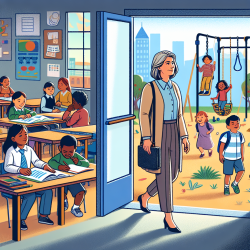Introduction
In the quest to enhance educational outcomes and promote healthier lifestyles among children, physically active learning (PAL) has emerged as a promising approach. By integrating movement into academic content delivery, PAL not only boosts physical activity levels but also enhances cognitive and social skills. A recent meta-synthesis, "Behaviours that prompt primary school teachers to adopt and implement physically active learning: a meta synthesis of qualitative evidence," sheds light on the factors influencing teachers' adoption and implementation of PAL in primary schools. This blog explores the key findings of the research and offers insights into how practitioners can improve their skills and outcomes by embracing PAL.
Understanding the Benefits of PAL
The meta-synthesis identified several benefits of PAL, both for teachers and students. For teachers, PAL facilitates a deeper understanding of class diversity and enhances motivation by witnessing the positive impact on students. For students, PAL improves educational outcomes, health, social engagement, and classroom behavior. By incorporating movement into lessons, teachers can foster an engaging and dynamic learning environment that supports diverse learning needs.
Overcoming Barriers to Implementation
Despite its benefits, the adoption of PAL faces several barriers. Teachers often express concerns about their capability to implement PAL effectively, citing a lack of confidence and skills. The research highlights the importance of teacher training in overcoming these barriers. Training programs should focus on building teachers' confidence, providing practical examples, and offering ongoing support. By adopting a trial-and-error approach, teachers can gradually develop their skills and adapt PAL to suit their classroom dynamics.
Creating a Supportive Environment
For PAL to be successfully implemented and sustained, a supportive school environment is crucial. This involves engaging all levels of the school community, including senior leadership, to foster a culture that embraces PAL. Adequate resources, strong leadership, and collaboration among teachers are essential components of a whole-school approach. By creating a community of practice, schools can ensure that PAL becomes an integral part of the educational system.
Encouraging Further Research and Development
The meta-synthesis underscores the need for further research to explore the complex interactions between teachers, students, and the school environment in the context of PAL. Practitioners are encouraged to engage in ongoing research and professional development to refine their PAL practices. By staying informed about the latest evidence and best practices, educators can continuously enhance their skills and contribute to the advancement of PAL.
Conclusion
Physically active learning offers a transformative approach to education, with the potential to improve both academic and health outcomes for students. By understanding the factors that influence the adoption and implementation of PAL, educators can take proactive steps to integrate movement into their teaching practices. With the right training, resources, and support, teachers can create dynamic and engaging learning environments that benefit all students.
To read the original research paper, please follow this link: Behaviours that prompt primary school teachers to adopt and implement physically active learning: a meta synthesis of qualitative evidence.










